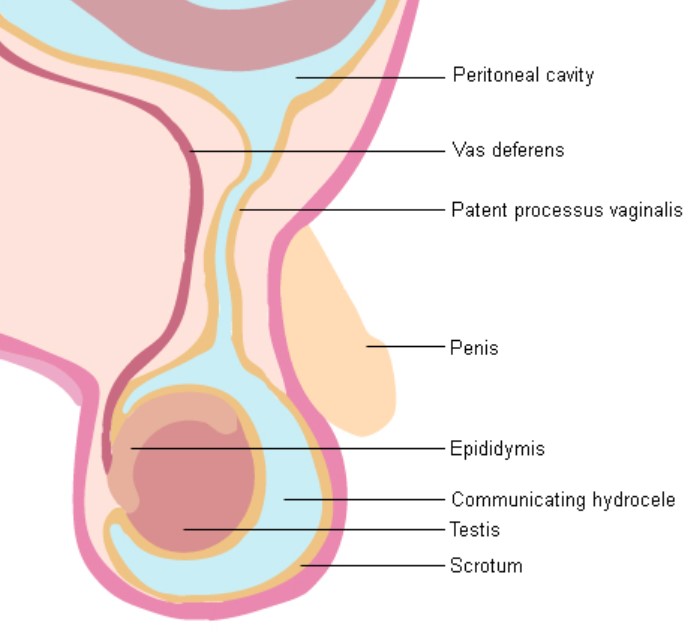Hydrocele
Overview
What is Hydrocele
A hydrocele (HI-droe-seel) is a type of swelling in the scrotum that occurs when fluid collects in the thin sheath surrounding a testicle. Hydrocele is common in newborns and usually disappears without treatment by age 1. Older boys and adult men can develop a hydrocele due to inflammation or injury within the scrotum.

Symptoms
Usually, the only indication of a hydrocele is a painless swelling of one or both testicles.
Adult men with a hydrocele might experience discomfort from the heaviness of a swollen scrotum. Pain generally increases with the size of the inflammation. Sometimes, the swollen area might be smaller in the morning and larger later in the day.
Causes
A hydrocele can develop before birth. Normally, the testicles descend from the developing baby’s abdominal cavity into the scrotum. A sac accompanies each testicle, allowing fluid to surround the testicles. Usually, each sac closes and the fluid is absorbed.
Sometimes, the fluid remains after the sac closes (noncommunicating hydrocele). The fluid is usually absorbed gradually within the first year of life.
Diagnosis
Our doctor will start with a physical exam. It’s likely to include:
- Checking for tenderness in an enlarged scrotum.
- Applying pressure to the abdomen and scrotum to check for inguinal hernia.
- Shining a light through the scrotum (transillumination). If you or your child has a hydrocele, transillumination will show clear fluid surrounding the testicle.
Treatment
In baby boys, a hydrocele sometimes disappears on its own. But for males of any age, it’s important for a doctor to evaluate a hydrocele because it can be associated with an underlying testicular condition.
A hydrocele that doesn’t disappear on its own might need to be surgically removed, typically as an outpatient procedure. The surgery to remove a hydrocele (hydrocelectomy) can be done under general or regional anesthesia. An incision is made in the scrotum or lower abdomen to remove the hydrocele. If a hydrocele is found during surgery to repair an inguinal hernia, the surgeon might remove the hydrocele even if it’s causing no discomfort.
